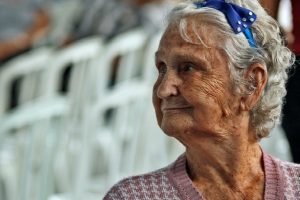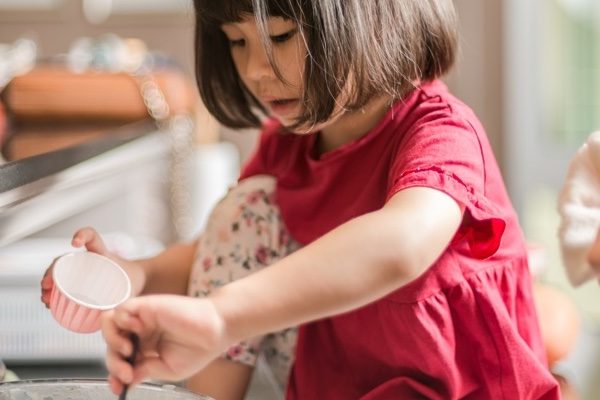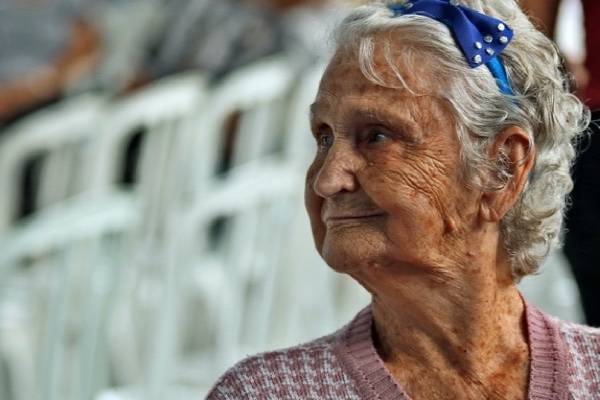Home safety and your child

Safety is parents’ number one concern for their children. We all want our kids to be safe, healthy and happy—especially when they are young and most vulnerable. As a family medicine physician, when my pediatric patients come in for their well child checks, I often review safety tips with parents in order to prevent injuries.
When Washington State passed the Child Restraint Law (the “Booster Seat Law”), parents became more educated about the proper use of car seats and seatbelts. Likewise, most people now practice better bike safety, for instance by insisting that all family members wear a helmet—something required by law in King County. Parents are also watchful over their children at the playground and in other public places. At home, however, it can be a different story. The leading causes of child injury are burns, falls and poisoning. I frequently remind parents that children ages one through five years are both curious and increasingly mobile and physically coordinated—a combination that can lead to increased risk of accidents.
Fire Prevention
Each year, thousands of people experience a fire in their home, but many young children don’t know how to escape safely. Safeguarding your house against fires and teaching children what to do if there is a fire can keep everyone safe.
Tips for fire prevention:
- Install and test smoke alarms on every level of your home and in every sleeping area.
- Practice an escape plan with your children.
- Keep furniture and other heavy objects out of the way of doors and windows.
- Lock up matches and lighters out of sight and reach.
- Don’t smoke indoors; better yet, don’t smoke at all.
- Never leave a hot stove unattended.
- Keep all portable heaters out of children’s reach and at least three feet away from anything that can burn.
- Avoid plugging several appliance cords into the same electrical socket.
Burn Prevention
Fire is just one cause of burn injuries. In my practice, I have seen children who have been seriously injured by hot pots and pans, electrical currents and chemicals. From washing up under a too-hot faucet to an accidental tipping of a coffee cup, burns are a potential hazard in every home.
Tips for burn prevention:
- Never leave your child alone in the bathroom.
- Cook with pots and pans on back burners, and turn handles away from the front of the stove.
- Place hot foods and liquids in the center of the table.
- Always supervise young children in the kitchen and around electrical appliances and outlets.
- Set your water heater to 120 degrees or lower.
- Keep matches, gasoline, lighters and all other flammable materials locked away and out of children’s reach.
- Cover unused electrical outlets.
Fall Prevention
Young children are still developing mobility and coordination and can be prone to injuries caused by falls. Most falls happen in the home, so it is important to keep your home safe for children and not leave young children unattended. Remember, it only takes seconds for a fall to occur.
Tips for fall prevention:
- Do not place toys or items that attract children on top of furniture.
- Place furniture away from windows; secure shelves and tall furniture to the wall with anchor straps.
- Install safety gates at the top and the bottom of staircases.
- Actively supervise toddlers on stairs.
- Make sure stairs are clear of toys and other objects.
- Pad sharp corners on coffee tables and other furniture.
- Install safety guards on windows.
- Keep windows locked when they’re closed.
Poison Prevention
What young kids see and can reach, they usually put in their mouths. As their mobility and capabilities increase, they are more likely to discover medicines and household products where they are stored. Be sure to keep the number for the national Poison Control Center handy: 1-800-222-1222. This number works from anywhere in the United States, 24 hours a day, seven days a week. However, if your child isn’t breathing or has collapsed, call 911 immediately.
Tips for poison prevention:
- Lock up medications.
- Safely store household cleaners, detergents and poisons (including alcoholic beverages) out of reach.
- Keep products in their original containers.
- Read labels and instructions on all household products.
- Use child-resistant packages.
- Do not leave potentially poisonous household products unattended while in use.
- Install carbon monoxide alarms.
- Make sure heating appliances are in good working order and used only in well-ventilated areas to prevent carbon monoxide buildup.
- Don’t run a car in the garage, even to warm it up; move the car outside first.
- Learn the names of your plants–both indoors and out–and then remove the poisonous ones.
This may look like a lot of lists, but it’s only a sampling to get you thinking. To a young child, everything is a temptation or plaything—including pets, swimming pools and lawn equipment, to name just a few. Try to see your home environment through your child’s eyes. What else should be removed, locked, repaired, padded or gated? By using common sense and staying a step or two ahead of your child’s current development, you can create a safe home environment for your growing child to explore.
Resources:
Osteoporosis, a silent disease

Like high blood pressure, osteoporosis, or porous bone, is a silent disease that can have devastating effects. A disease that can result in serious fractures, osteoporosis is a major public health threat for 44 million Americans, 68 percent of whom are women. In the U.S. today, 10 million people already have osteoporosis and 34 million more have low bone mass, placing them at increased risk for this disease.
Dr. Shailaja Reddy, an internal medicine physician at Pacific Medical Center’s Renton clinic, said, “It’s a major problem. The first indicator you get is a fracture and if you are age 75 or 80 and you have a hip fracture it may take months to recover from it,” she said.
The message Dr. Reddy drives home with her patients is one of awareness and prevention. “Get your calcium and exercise, even if you’re in your forties. If you do this consistently from a younger age it will help you down the road,” she said. Paying attention to Dr. Reddy’s message makes sense; osteoporosis is responsible for 1.5 million fractures annually, including 300,000 hip fractures.
As with many illnesses there are certain risk factors that may indicate whether a person will develop the disease. The chance of developing osteoporosis is greater for women because they have less bone tissue and lose bone faster than men because of the changes that occur with menopause.
While many people may think of osteoporosis as a woman’s disease, men can be at risk, too, Dr. Reddy said. “Anyone who is slim and weighs less than 127 pounds is at risk,” she said. Smoking cigarettes and drinking excess alcohol (more than three glasses daily) are also factors. In addition, the older you are, the greater your risk of osteoporosis.
While there is no gene that’s been found to be associated with the disease there is a family tendency toward it. “If you have a first degree relative with osteoporosis you are at high risk,” warned Dr. Reddy.
Getting enough calcium in the diet is key to prevention, she said. Women who are past menopause should take 1200 mg. daily of calcium in divided doses.
“That’s really important. If you take all 1200 mgs at once your body can’t absorb it all,” she said, adding that it’s important to take between 600 and 800 international units of Vitamin D daily. Without the Vitamin D calcium can’t be absorbed. Dr. Reddy noted that because of the many gray days in the Pacific Northwest, vitamin supplements may be the answer because sunlight is required to naturally produce Vitamin D.
The type of exercise needed to prevent osteoporosis is weight-bearing exercise such as walking, jogging, weight training, hiking or yoga. Being sedentary and not taking calcium raises the risk of bone loss. So does long-term use of glucocorticoids.
Want to know the status of your bone health? Your best bet is a bone mineral density test to identify osteoporosis, determine your risk for fractures and measure your response to osteoporosis treatment. The most widely recognized bone mineral density test is a DXA test, a painless test similar to an X-ray but with much less exposure to radiation.
Dr. Reddy said that Fosamax, Actonel and Boniva are the class of drugs that have been shown to be most effective. Fosamax and Actonel are taken weekly while Boniva is a newer medication that is taken monthly. Dr. Reddy advises her patients to take one of the two weekly medications first because they have been proven over many years to be both safe and effective. “Other medications are also available for treatment- be sure to discuss with your doctor what will work best for you,” said Dr. Reddy.




